I have a Microcord & Rolleiflex; two fully functioning Twin Lens Reflex (TLR) cameras, with one of them being ‘influenced’ rather heavily by the other. I’d like to introduce you to each of them and to highlight the differences, similarities and practical features of both.
Made in England?
I was born and brought up in England, and while I shy away from jingoistic nationalism, I’m intrigued by elements of history that are local to me. Architecturally in London, we are rich in history – My local church has parts that date to the 12th century, while there are also ruins of a local abbey which was built by Richard de Lucy – supposedly as penance for his part in the murder of Thomas Becket.
We also have the remnants of more recent industrial history: the bit of London I’m from (Plumstead) was at one time the very beating heart of the British Motorcycle industry, with Associated Motocycles producing Matchless, AJS, Norton and other motorbikes. The neighbouring town, Woolwich, was the first home of the aircraft manufacturer Handley Page as well as hosting the Dockyard that built HMS Beagle and a major armemants factory in the Royal Arsenal (a site that attracted a fair amount of unwanted attention in the Blitz).
The UK has less heritage in commercial camera manufacture – a lot of the optical companies specialized in producing instruments for the defence industries, rather than putting their weight behind producing civilian cameras, but a few camera manufacturers made a go of it in the 40s and 50s, diverting some manufacturing potential to cameras such as the Periflex from Corfield, the Wrayflex from Wray, the AGILux, AGIFold and AGIFlex from Aeronautical General Instruments in Croydon and the Microcord and Microflex from Micro Precision Products (MPP) based in Kingston Upon Thames.
The story goes that the owner of MPP got hold of a Rollei after the war and took it apart to produce his own copy which he dubbed the Microcord. I’ve been told that a lot of German patents were rather open to raiding after the war, although at some point MPP actually did a recall on cameras to modify them so that didn’t infringe a Rollei patent on the zeroing film counter, so it wasn’t quite ‘open season’.
A few years ago I put in bids on a number of old Microcord TLRs as I was intrigued to see how a British TLR would fare. Sod’s law dictated that two derisively low bids both won, so I ended up with two (one of which has been on long-term loan to a friend in Paris for some time now).
The Microcord is really a rather good fusion of Rollicord and RolleiFlex features. It utilizes the simpler knob-wind and manual shutter cocking from the cheaper model, but adopts the ergonomic wheel-and-window system for setting shutter speeds and apertures.
By the mid-50s MPP had a revised version of the Microcord: It was still known by the same name but was recognizable by inclusion of the film counter that originally infringed the Rollei patent. It is this model that I have.
Microcord (Mk II 1956-1958)
The Microcord has an f/3.2 viewing lens and an f/3.5 Xpress taking lens, both from Ross. reviews at the time sang the praises of this lens, pointing out that it was in no way overshadowed by its German counterparts (but these were British magazines, so might not have been totally without bias).
The shutter is a Prontor SVS with shutter speeds from 1-1/300 plus B, while apertures go down to f/22. Apertures are set via a thumb-wheel positioned on the left of the pair of lenses, while the shutter speeds are set by its twin on the right. Film is advanced by a knob on the right of the camera, with a release button in the centre to allow wind-on to the next frame – the shutter is cocked separately by shifting a lever under the taking lens. The focusing knob is also on the right side (as on the Rolleicord), shifting the entire lens panel and getting as close as 3ft.
Both lenses take Rollei-style internal and external bayonets. The lens panel also includes an inset flash socket, and a selector for X or M synch, plus a delay setting for self-timed shots. There is a very comfortable unthreaded shutter release button on right, with a threaded socket for a remote release on the other side of the panel.
The unlinked film transport and shutter cocking does require an amount of discipline if you are to avoid double exposures or missing frames, although the main annoyance for me is a tendency to leave fingers under the taking lens, where they sometimes get in the way of the shutter cocking lever as it heads right during an exposure.
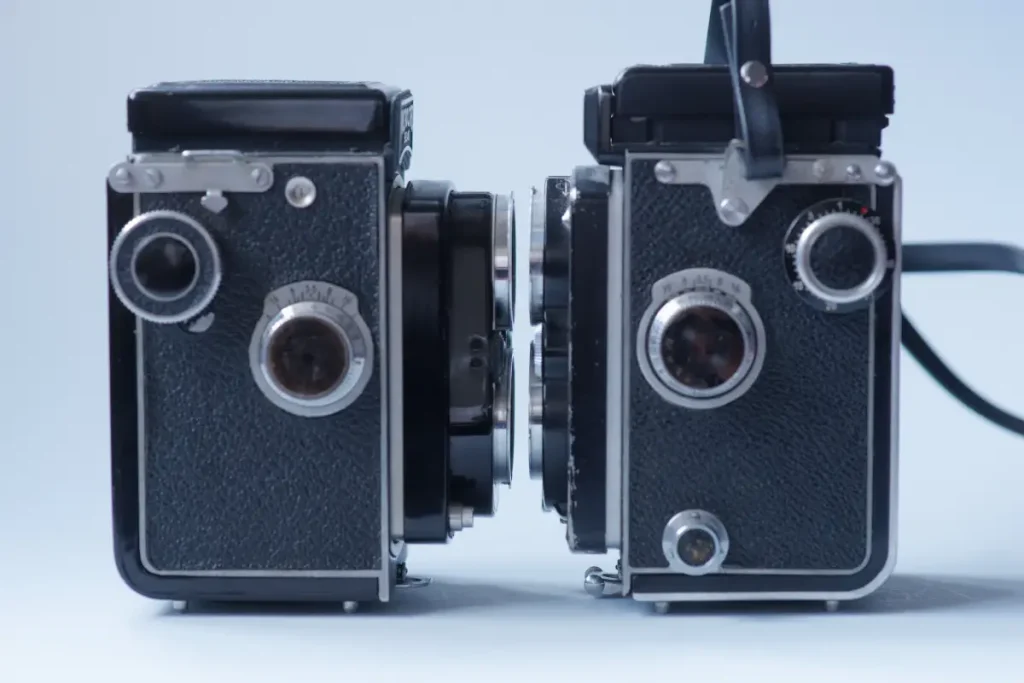
Rolleiflex Automat (K4/50 1949-1951)
The Automat K4/50 was the second Rolleiflex model introduced by Franke & Heidecke after production restarted after the war. It was a development of the original Rolleiflex introduced in 1929 and introduced electronic flash synchronization. ‘Automat’ refers to the automatic handling of film transport; the camera can sense the start of the film and features a film counter which automatically advances the film by the correct amount, removing the need to view numbers off the film backing through a ruby window.
The K4/50 has a 75mm f/3.5 Zeiss Tessar taking lens with apertures down to f/22; the viewing lens is not specified, but looks to be faster. The Compur shutter gives speeds from 1-1/500 plus B. Apertures are again set by wheels on either side of the mount, although the Rollei gives helpful arrows by the sides of the windows to indicate which wheel controls which variable. The film is advanced by the fold-out crank on the right – it is a relatively short throw and requires the crank to be reversed to the parked position before a shot is taken. Cocking of the shutter is automatic when the crank is reversed and the threaded shutter release has a rather Heath-Robinson mechanical lock to prevent accidental exposures once it is cocked. The front panel also holds an inset flash synch socket plus a delay switch. The focus knob is on the left side of the camera and goes down to 2.3 feet. Unlike the models that followed later in the 50s, this one has no light meter built in.
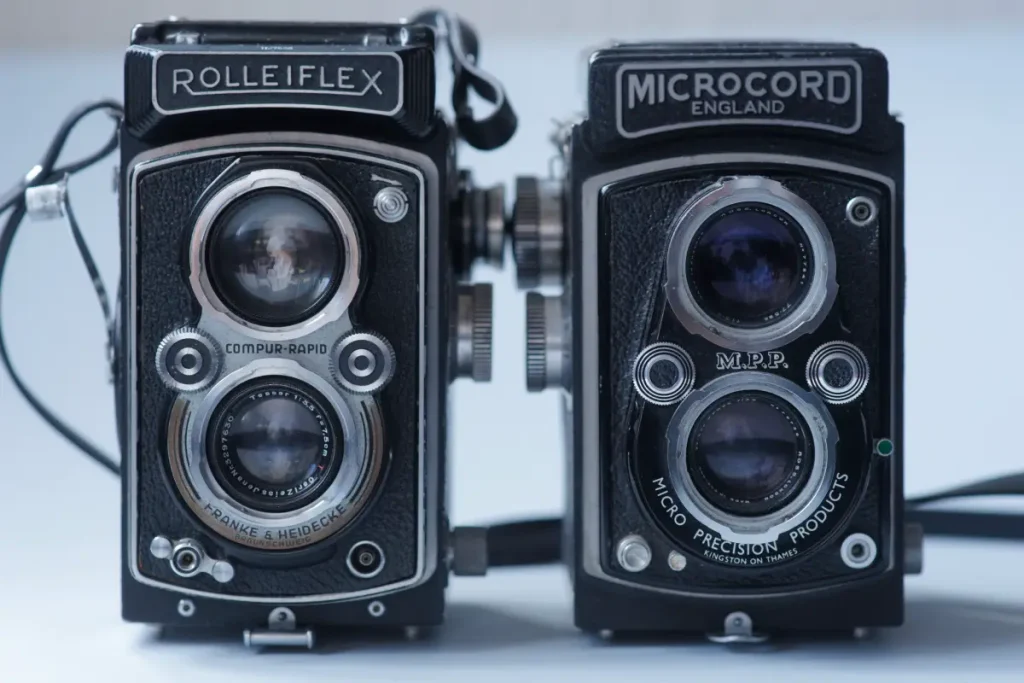
Differences
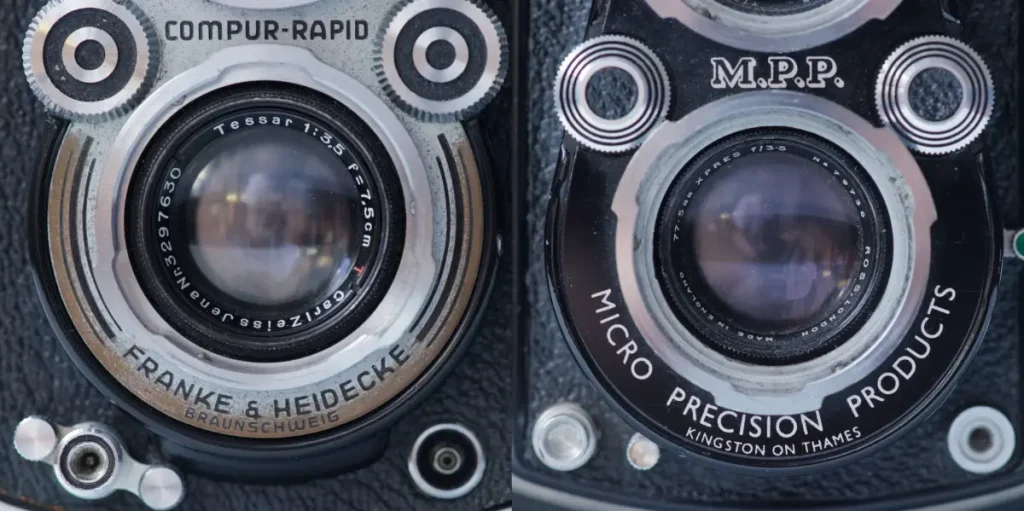
So what extra does the Rollei offer? It has a Zeiss lens, but the Ross version is no slouch and performance is similar, the Tessar is slightly wider (75mm against 77.5) and focuses slightly closer.
What you do get with the Rollei is a faster shutter speed (up to 1/500), although this does need to be selected before the film is wound on, you also get a quicker wind-on via the crank, plus the shutter is cocked automatically.
In practical use one of the biggest differences is in the sports finder included with both cameras. To dwell on the sports finder might seem strange in cameras that are showing focus on a waist-level viewfinder, but in many situations the sports finder is a highly practical framing option for a TLR. The positioning of the camera at your midriff can work well compositionally, giving that slightly lower than expected viewpoint which can give a photograph ‘pop’, but composing or even levelling a mirrored viewfinder image is not always easy – so it can be easier in some circumstances to use the direct vision sports finder to compose. However much people might sing the praises of an SLR optical viewfinder, there is something about an unobstructed full life-size image for composition and timing that surpasses it.
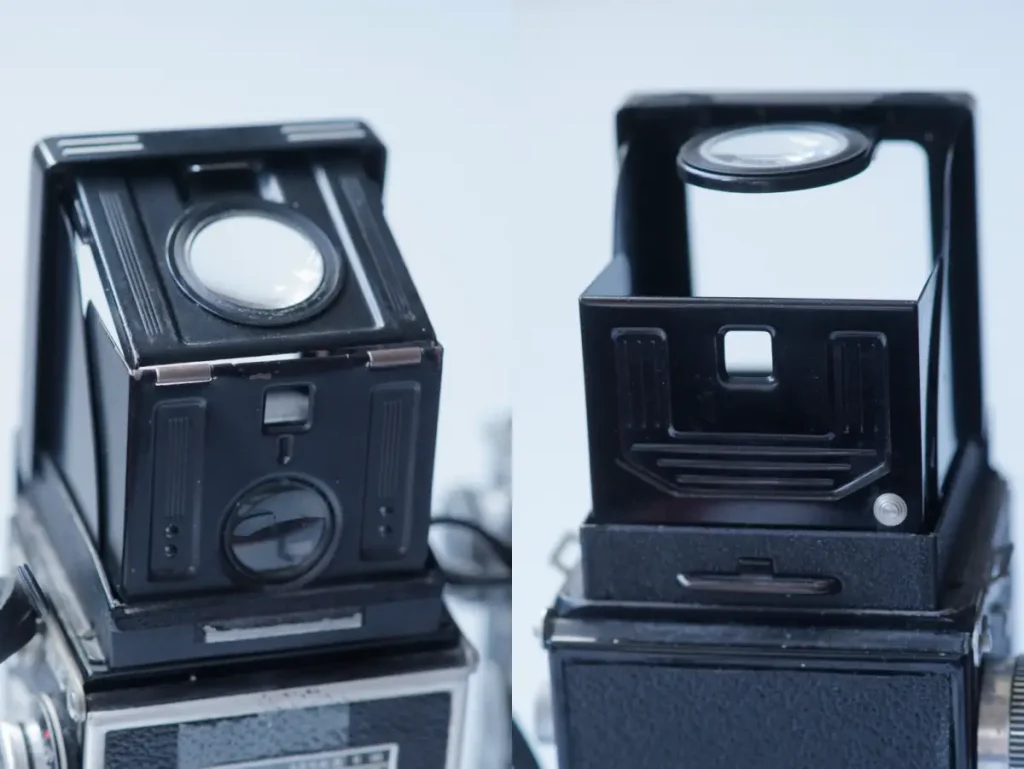
Both cameras offer a sports finder, which consists of a cut-out in the front and rear of the hoods that gives you a square window on the world. With the Microcord you need to judge focus first, but the Rollei actually allows you to focus with the camera up to your eye. This is because it has two apertures in the rear of the hood – when the sports finder is in place the lower window gives a view via a flat mirror of the centre portion of the focusing screen itself – this gives an upside-down image, but it does allow you to judge accurate focus quite well, at which point you can just shift your eye up to the direct vision finder to compose.
There is a slight downside to the excellent Rollei focusing sports finder – while the simple Microcord finder swings up and down very easily, deployment of the more complex Rollei hood is not quite as smooth.
Conclusions
TLRs are odd beasts, but rather satisfying to use. They have the advantage of being able to judge focus with no blackout at the moment of exposure and none of the vibration associated with a large moving mirror or a focal plane shutter. Both the Microcord and Rolleiflex are highly practical medium format cameras – but the same goes, of course for TLRs from Yashica, Mamiya and others. Everyone should own, or at least shoot, a TLR at some point. They are cameras out of time.
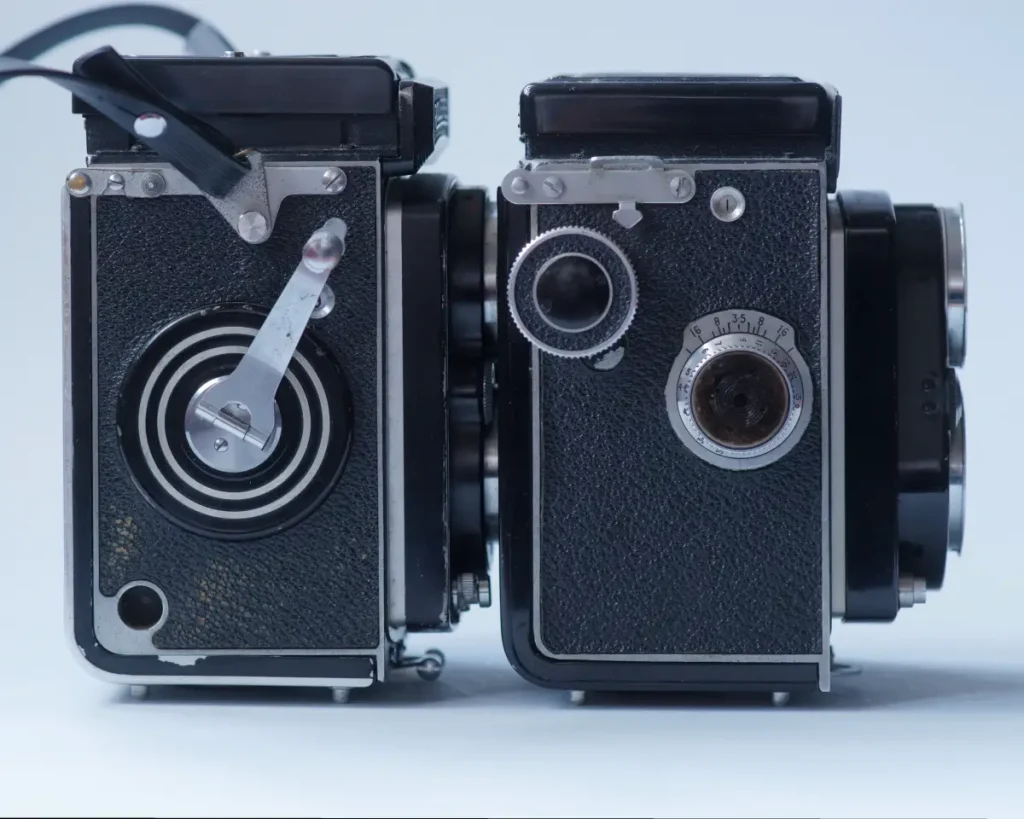
Epilogue
What became of MPP? In 1958, they brought out a new model, the Microflex, which added the crank and automatic shutter cocking found on the Rolleiflex. There were some reliability issues with this extra complication, but the main thing that killed off the MPP TRLs was the removal of tariffs on German photographic equipment. With a level playing field, margins were simply not good enough to justify staying in the TLR market, so they departed, concentrating instead on production of other technical cameras and photographic equipment. It is said that the original lightsabre used by Darth Vader in Star Wars was fashioned out of the body of an MPP flashgun. MPP seem to have ceased production of their monorail technical cameras in 1982 and to have finally closed down in 1988.
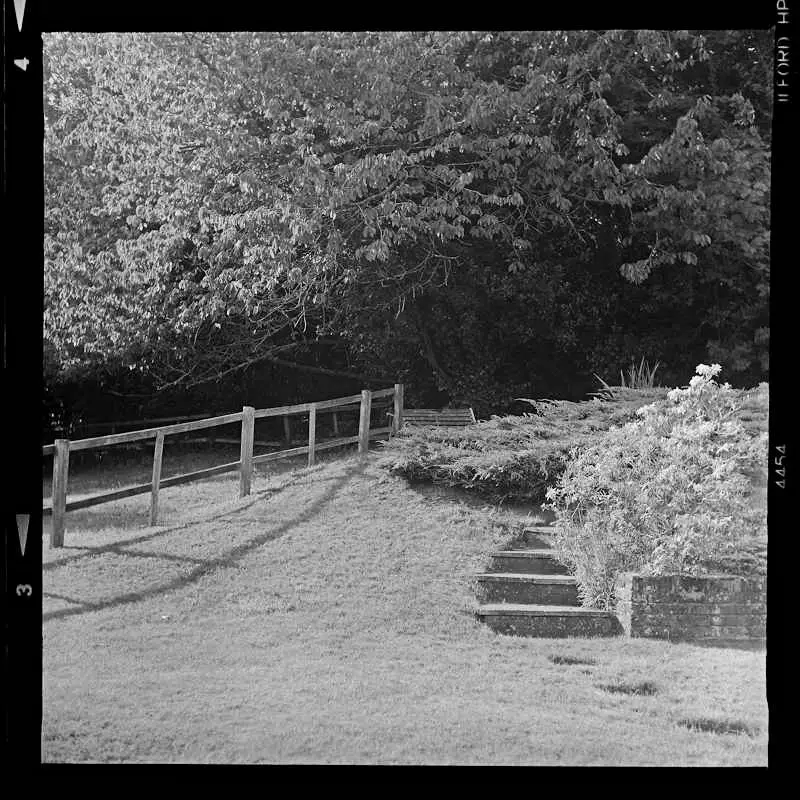
Surrey Garden: Microcord II, Ilford HP5 Plus
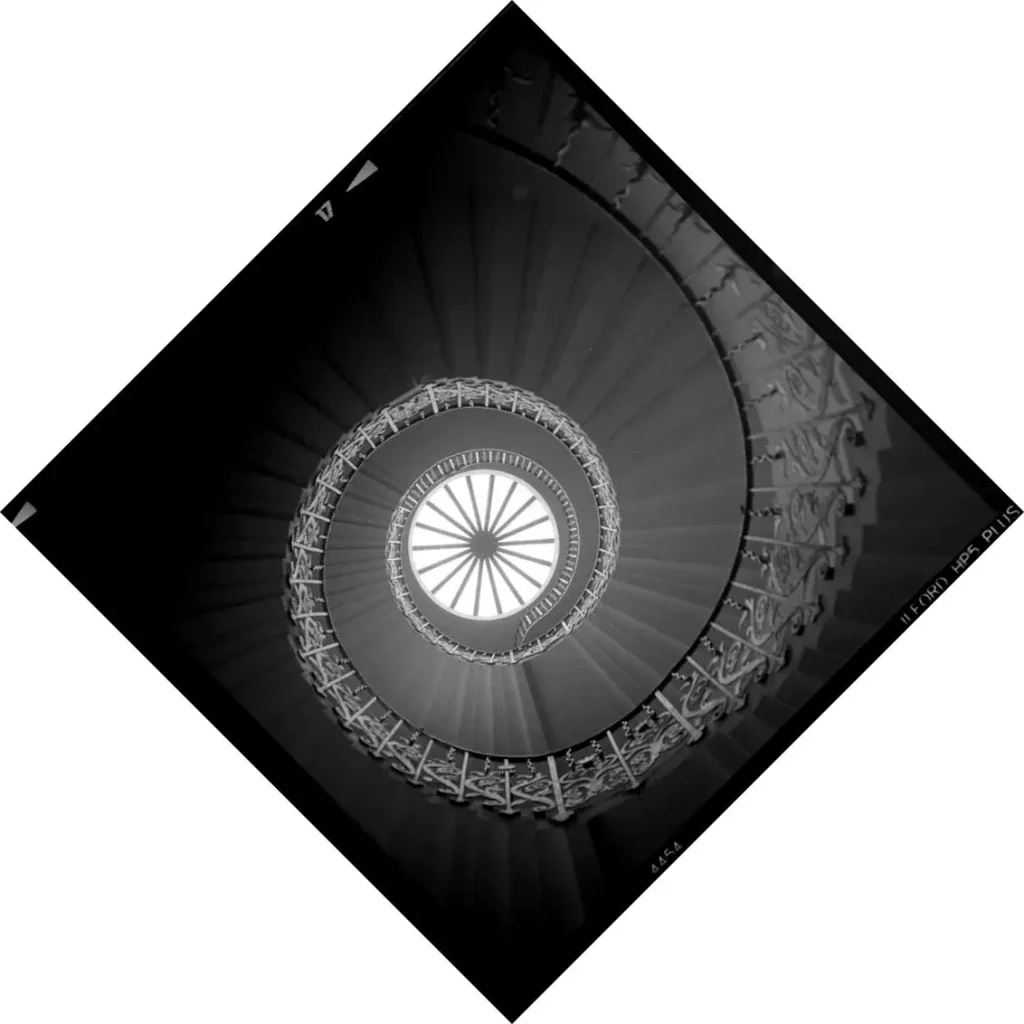
The Tulip Stair, Greenwich: Microcord II, Ilford HP5 Plus
After a number of name changes Franke & Heidecke ended up being called DHW Fototechnic. They actually released a revised Rolleiflex film TLR at Photokina in 2012, but the company finally filed for insolvency and stopped production of Rolleiflex TLRs in 2015 after 86 years. It was the end of an era.
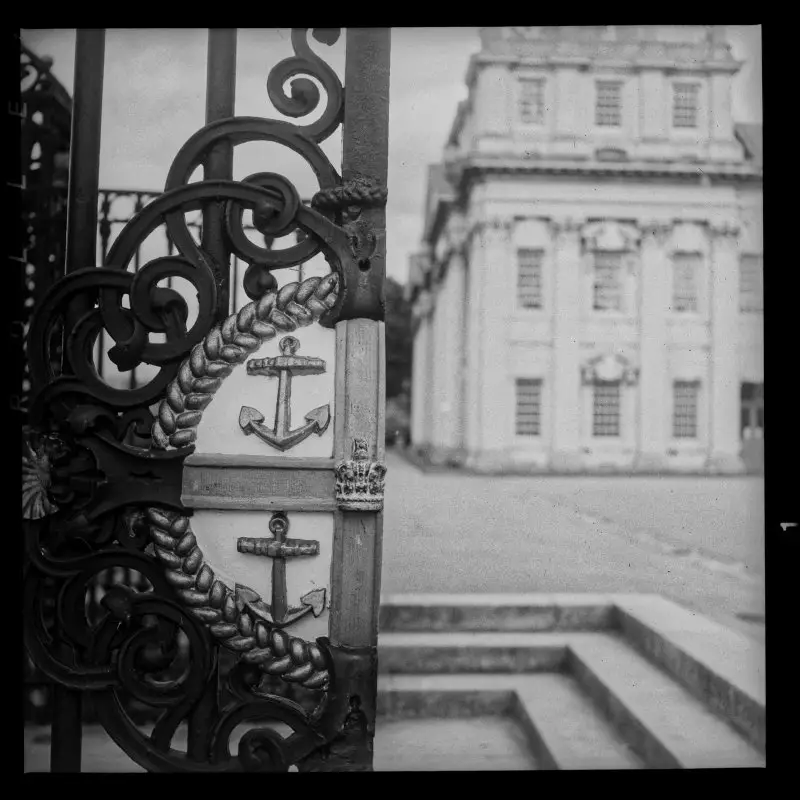
River Gates, Greenwich Naval College: Rolleiflex Automat K4/50, Rollei Superpan 200
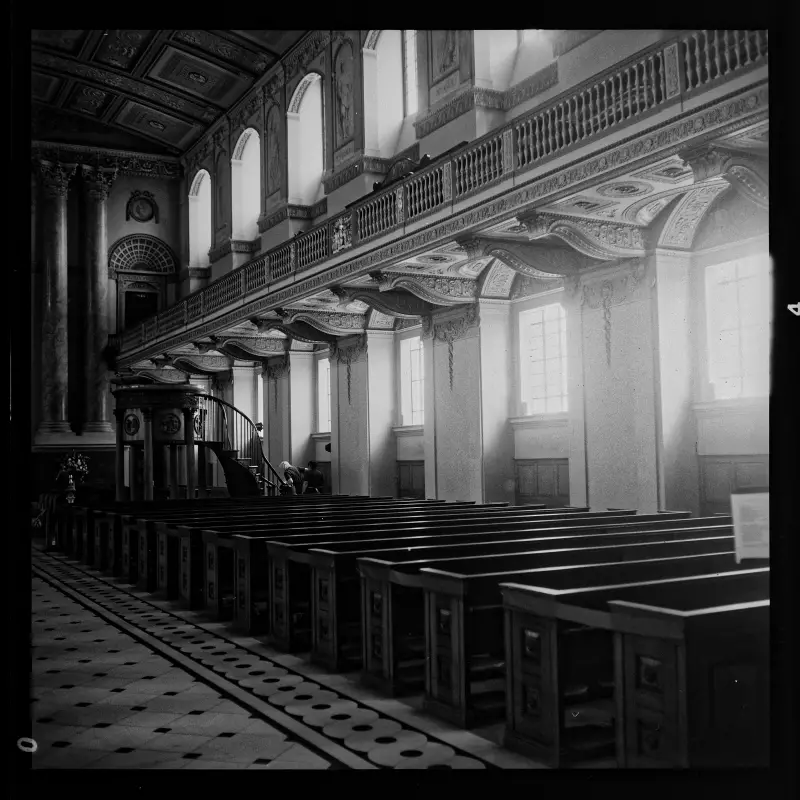
Chapel, Greenwich Naval College: Rolleiflex Automat K4/50, Rollei Superpan 200
Everything passes, but we remember, with respect, Associated Motocycles, Woolwich Dockyard, the Royal Arsenal, MIcro Precision Products and Franke & Heidecke.
You can find my other articles and review on 35mmc here
Share this post:
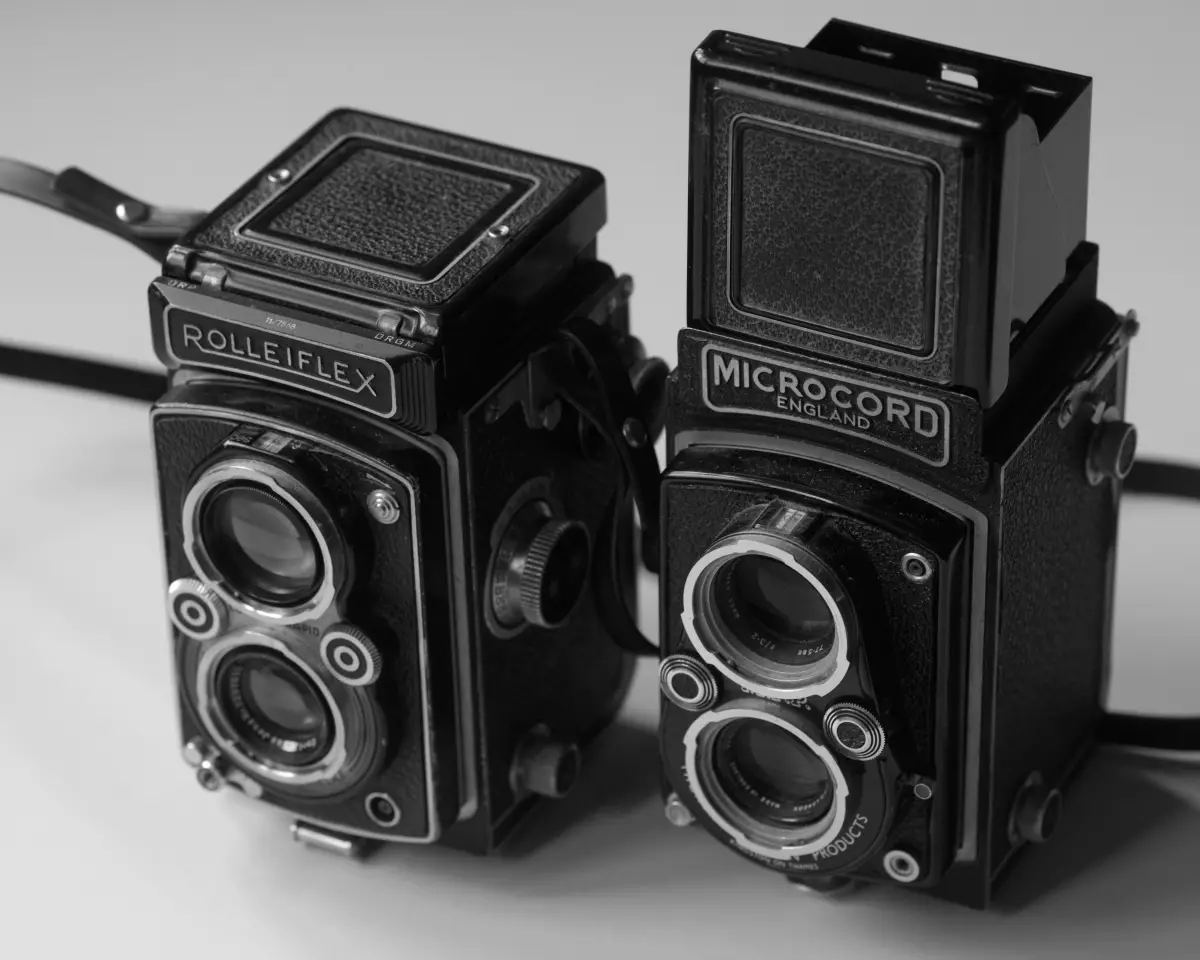
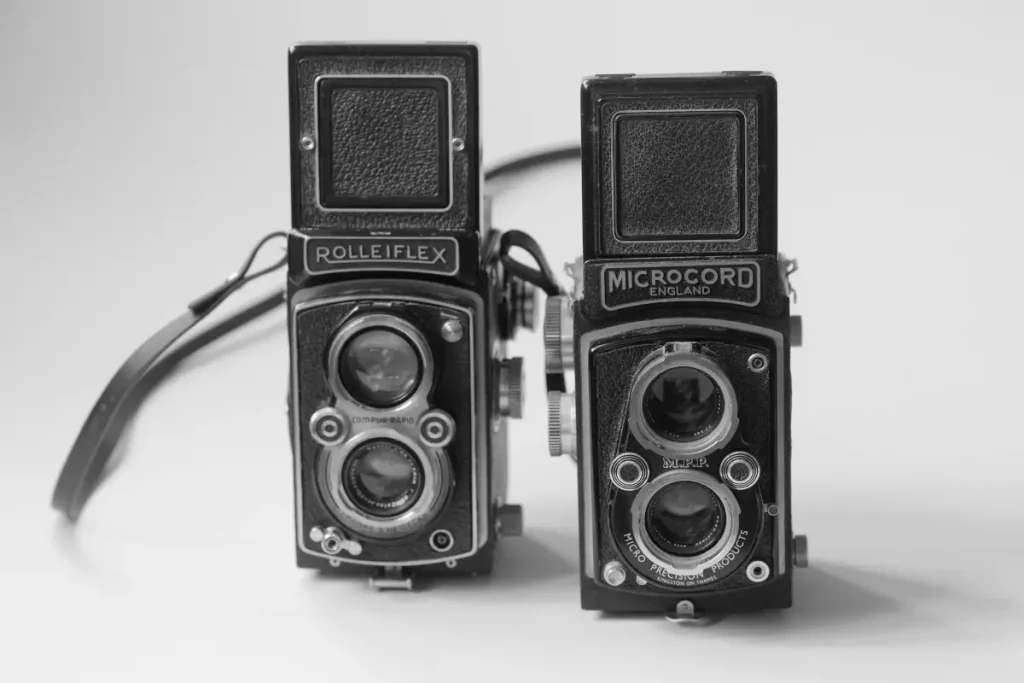








Comments
Ralph Turner on Microcord & Rolleiflex – A Comparison of two TLRs – By Bob Janes
Comment posted: 01/12/2020
Bob Janes on Microcord & Rolleiflex – A Comparison of two TLRs – By Bob Janes
Comment posted: 01/12/2020
D Evan Bedford on Microcord & Rolleiflex – A Comparison of two TLRs – By Bob Janes
Comment posted: 02/12/2020
Comment posted: 02/12/2020
Rob Hawthorn on Microcord & Rolleiflex – A Comparison of two TLRs – By Bob Janes
Comment posted: 02/12/2020
By the way, we're neighbours if you still live in the area.
Comment posted: 02/12/2020
MrSnappy on Microcord & Rolleiflex – A Comparison of two TLRs – By Bob Janes
Comment posted: 02/12/2020
Michael Jardine on Microcord & Rolleiflex – A Comparison of two TLRs – By Bob Janes
Comment posted: 02/12/2020
Kodachromeguy on Microcord & Rolleiflex – A Comparison of two TLRs – By Bob Janes
Comment posted: 12/01/2021
Comment posted: 12/01/2021
Alison fellows on Microcord & Rolleiflex – A Comparison of two TLRs – By Bob Janes
Comment posted: 22/04/2024
Comment posted: 22/04/2024
Ibraar Hussain on Microcord & Rolleiflex – A Comparison of two TLRs – By Bob Janes
Comment posted: 22/03/2025
Excellent review and beautiful photographs. Thanks
Comment posted: 22/03/2025
Philip Walker on Microcord & Rolleiflex – A Comparison of two TLRs – By Bob Janes
Comment posted: 27/04/2025
I recently did a little blog about the Hacoflex that might be of interest. kameraostalgie.blog/2025/04/11/hacoflex-twin-lens-reflex/
Kind regards, Phil Walker.
Comment posted: 27/04/2025
Ibraar Hussain on Microcord & Rolleiflex – A Comparison of two TLRs – By Bob Janes
Comment posted: 27/04/2025
I’ve got to get myself a Microflex
I missed a few going around the £150 mark in perfect order a couple months back and nothing since !
It’s like having a Rolleiflex for pocket money.